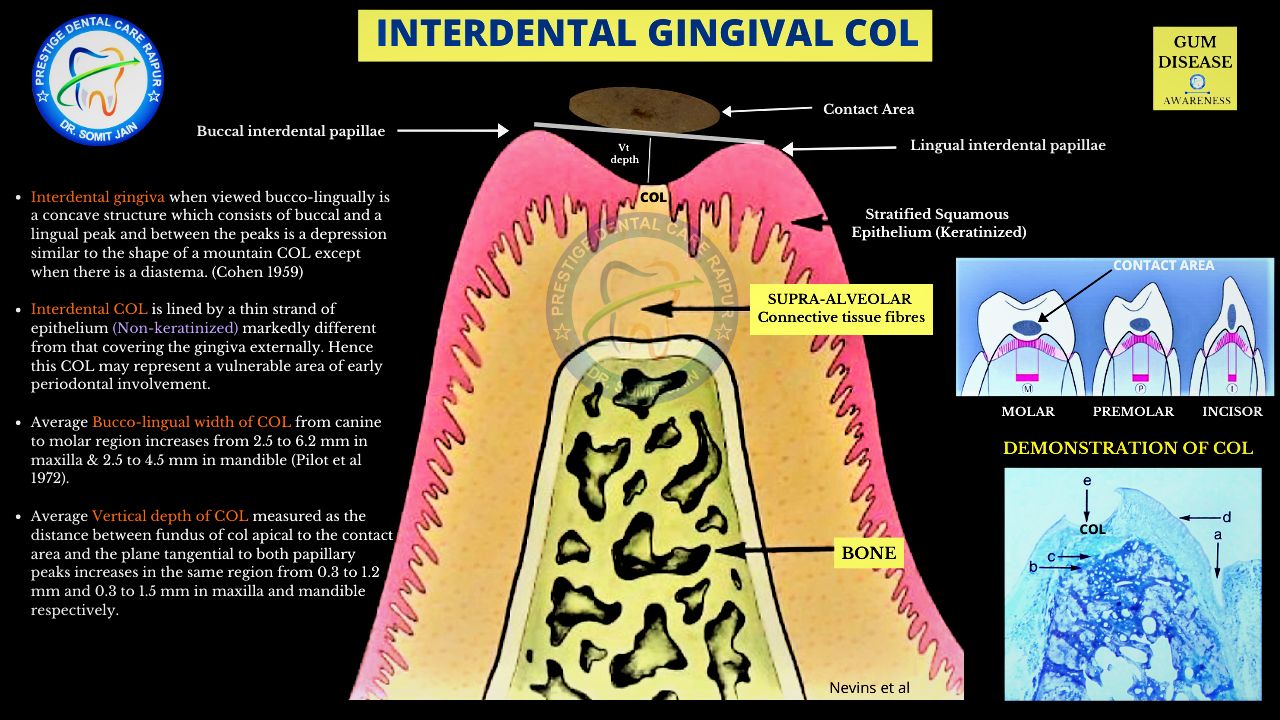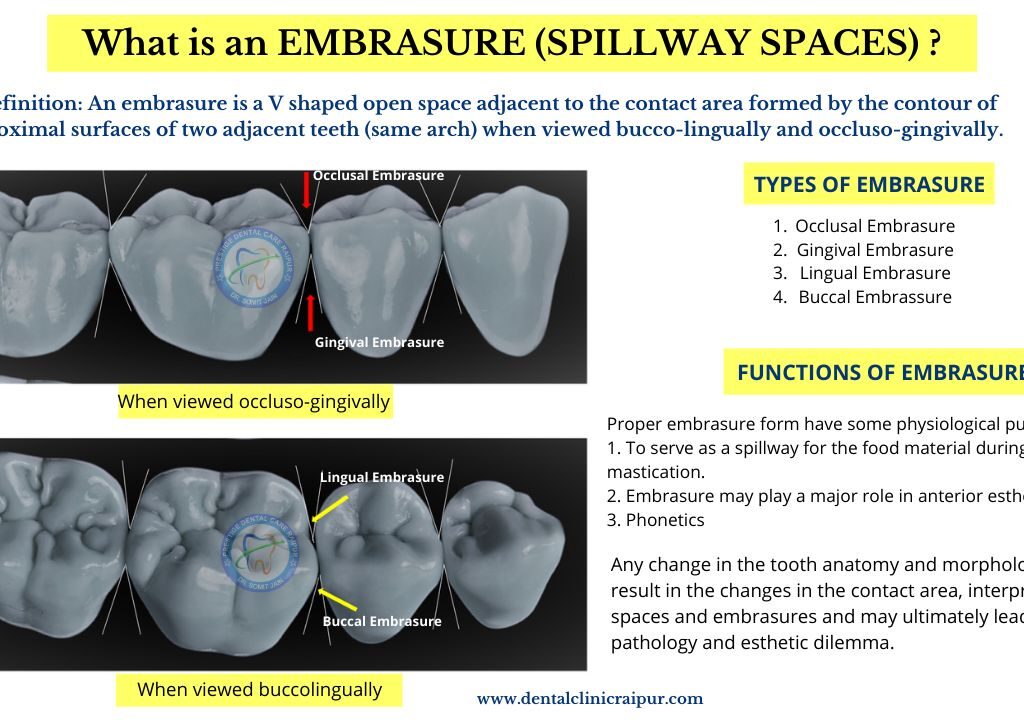- Interdental space is one of the most common site for the dental pathology may it be caries or any periodontal lesions.
- Any imperfections in the interdental area (tooth or periodontium related) may lead to the accumulation and retention of biofilm causing dental lesions.
- Hence it is necessary to have the basic understanding of anatomy and histopathologic make-up of this area labio-lingually, mesio-distally and occluso-cervically for periodontal & restorative considerations.
Interdental area is composed of
1. Proximal contact area
2. Interproximal spaces (formed by proximal surface in contact)
3. Embrasures (spillways)
4. Interdental gingiva (Buccal and lingual interproximal papilla plus Interpapillary Saddle or COL)
INTERDENTAL COL (Interpapillary Saddle)
- Interdental gingiva is the normal gingiva which fills up the concave interdental space between two adjacent teeth and takes the form of a variable depression bounded buccally and lingually by the interdental papillae.
- Until 1959, there was a general agreement that the interdental gingiva as it extends in the buccolingual direction is convex and cone or pyramidal shaped with one peak. These tissues were believed to perform the role as deflection of food debris from the interproximal area.
- Cohen in 1959 initially described the morphology of the interdental tissue in his study of human and monkey material. Interdental gingiva when viewed buccolingually is a concave structure which consists of buccal and a lingual peak (2 peaks) and between the peaks is a depression similar to the shape of a mountain COL except when there is a diastema.
- Interdental COL area is frequently damaged during and after the perio-restorative procedures due to two basic reasons:
1. COL’s morphologic concavity (difficulty in oral hygiene maintenance)
2. Histologically thin and Non-keratinized epithelium (readily shows periodontal inflammation due to plaque accumulation) - The labiolingual dimensions and vertical depth of the Interdental COL depends on the form and size of adjacent teeth and the extent of the contact area.
- Average labiolingual width of the col from canine to molar region i.e. the distance between the labial and lingual papillary peaks increases from 2.5 to 6.2 mm in the maxilla and from 2.5 to 4.5 mm in the mandible (Pilot et al 1972).

EMBRASURE (SPILLWAY SPACES)
What is an embrasure?
An embrasure is a V shaped open space adjacent to the contact area formed by the contour of proximal surfaces of two adjacent teeth (same arch) when viewed bucco-lingually and occluso-gingivally. (Dr.Somit Jain & Dr.Abhishek Hirwani)



Principal Fibre Bundles of Periodontal Ligament



